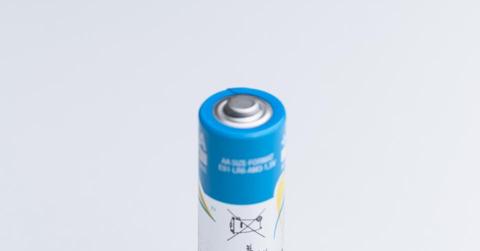MIT Is Developing A Battery That Eats Carbon Dioxide
A new lithium-based battery could absorb greenhouse gas before it ever gets into the atmosphere.
Updated Oct. 15 2018, 1:43 p.m. ET

Researchers at MIT may have found an innovative way to reduce greenhouse gases from getting into the atmosphere. A new type of battery they're working on could be made partly from carbon dioxide captured from power plants.
Rather than attempting to convert carbon dioxide to specialized chemicals using metal catalysts, which is currently a very difficult process, this battery could continuously convert carbon dioxide into a solid mineral carbonate as it discharges. The battery is made out of lithium metal, carbon, and an electrolyte that the researchers designed.
MIT said in a release that although they're still in early-stage research and far from commercial deployment, the new battery formulation could open up new avenues for tailoring electrochemical carbon dioxide conversion reactions. The innovation could ultimately help reduce the emission of the greenhouse gas to the atmosphere.
-1539612307238-1539612309601.jpg)
This scanning electron microscope image shows the carbon cathode of a carbon-dioxide-based battery made by MIT researchers, after the battery was discharged. It shows the buildup of carbon compounds on the surface, composed of carbonate material that could be derived from power plant emissions, compared to the original pristine surface.
“Carbon dioxide is not very reactive,” Assistant Professor of Mechanical Engineering Betar Gallant explained, so “trying to find new reaction pathways is important.”
Gallant and her co-workers, whose expertise has to do with nonaqueous (not water-based) electrochemical reactions such as those that underlie lithium-based batteries, looked into whether carbon-dioxide-capture chemistry could be put to use to make carbon-dioxide-loaded electrolytes — one of the three essential parts of a battery — where the captured gas could then be used during the discharge of the battery to provide a power output.
“What we’ve shown for the first time is that this technique activates the carbon dioxide for more facile electrochemistry,” Gallant said.
“These two chemistries — aqueous amines and nonaqueous battery electrolytes — are not normally used together, but we found that their combination imparts new and interesting behaviors that can increase the discharge voltage and allow for sustained conversion of carbon dioxide," she continued.
This early system has not yet been optimized and will require further development, the researchers say. For one thing, the cycle life of the battery is limited to 10 charge-discharge cycles, so more research is needed to improve rechargeability and prevent degradation of the cell components.
“Lithium-carbon dioxide batteries are years away” as a viable product, Gallant said. This research covers just one of several needed advances to make them practical.